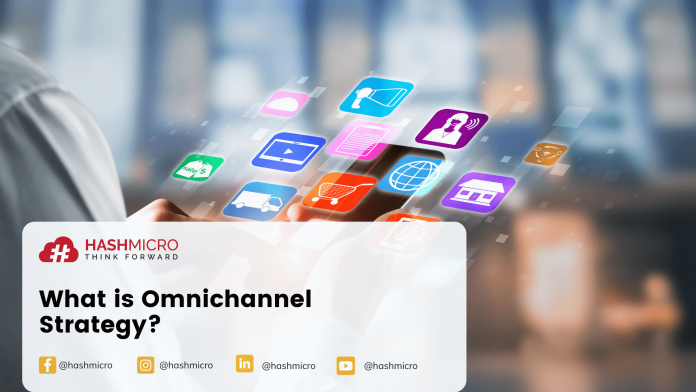Along with the era of globalization, the shopping experience of customers has also changed. There is no need to visit shops or markets to get a product or service. Businesses need to know more about what an omnichannel is. Devices have become a new kind of market. The public has more than enough options to buy something, and regardless of whether it is online, offline, or a combination of the two is known as omnichannel strategy.

Table of Content
What is an Omnichannel?
Omnichannel is a multichannel sales approach that provides customers’ best experience when shopping online via mobile devices, laptops, or physical stores. Focus on the overall customer experience, not individual experiences on different channels.
According to the Harvard Business Review, 73 percent of all customers use multiple channels during their buying process. Only when customers have gathered as much information as possible from various sources to support their purchasing decisions do they decide to buy from a supplier.
Benefits of Omnichannel
1. Better data collection and analysis
The omnichannel strategy allows collecting customer data from different channels and systems such as cookies, device IDs, shopping carts, social media, and more. With this information’s help, you can find out the views of every consumer who is involved with your brand. This information can be a source for analyzing customer behavior, interests, as well as intentions for better marketing planning, resulting in higher conversion rates.
2. Well segmented customer
Analysis of consumer data will help to find ideal customers and segment them according to their respective intentions. It also allows businesses to design better advertising or marketing. For example, when a customer buys a dining table set, advertisements about the same product will only annoy them. Therefore, you can use the cross-selling or up-selling method by offering other product offers but still related to previously purchased products, such as sofa sets, beds, or dining mats.
Multichannel marketing is essential because it helps you create positive experiences for customers at every stage of their life cycle, reduce churn, and encourage and build a positive reputation for your brand.
3. Better brand visibility
Omnichannel helps to place your message across channels consistently and timely, whether it’s online or in a physical store. Whichever is most convenient for your customers. Every time a customer discovers your brand, they are offered the best customer experience but still personalized. Better brand visibility encourages greater customer loyalty.
4. Cost-effective
With the insights gained from the data collected, you can carry out marketing strategies and deploy resources more efficiently. Analyzing omnichannel data helps you know where and when to concentrate more on specific channels than others, to increase profits.
5. Achieve a higher ROI
The benefits mentioned above ultimately lead to better customer engagement. As a result, more conversions and higher ROI growth.
Some of the strategies you can do to implement an omnichannel strategy
1. Put customer experience first.
Understand the channels they generally use and their behavior across all channels, and make a detailed plan of how you want to deliver the experience. Make sure that the features and services you have can provide the best convenience and solutions.
2. Use data as a base when strategizing.
CRM data will help to know how your customers are behaving and therefore can create solutions to overcome any challenges that may occur. If the data is used correctly, you can even reduce the churn rate.
3. Segment users and personalized trips.
After analyzing the data, you can easily segment users into different categories based on common behavior patterns. This will help you create a personalized experience for each type of customer.
4. Knowing the correct situation and context
The most important part of an omnichannel marketing strategy in the context. Sending the wrong message to the wrong audience at the wrong time will prevent users from interacting with you. Please make sure the context of your message is relevant to the user and send it to the user when they are most active for them to interact with the most.
5. Choose the right marketing automation tool.
Use the right marketing tools to implement your strategy right from planning to implementation. Do a thorough analysis before choosing the right one.
6. Make your business customer-centric.
Customer-centric is an utterly customer-focused approach designed based on the needs and interests of consumers. Employees must receive training to provide consistent service to customers.
Conclusion
In the future, more businesses will choose the omnichannel strategy. This is, of course, good to do, but while still paying attention to basic approaches such as location, product quality, branding, and others. All of these factors must be worked out together. One thing to keep in mind is that the strategy values the consumer experience above all else while also being able to track data and provide more tailored solutions in the future. In order to help you to track customer’s data, and convert them, you can implement CRM software from HashMicro.


































